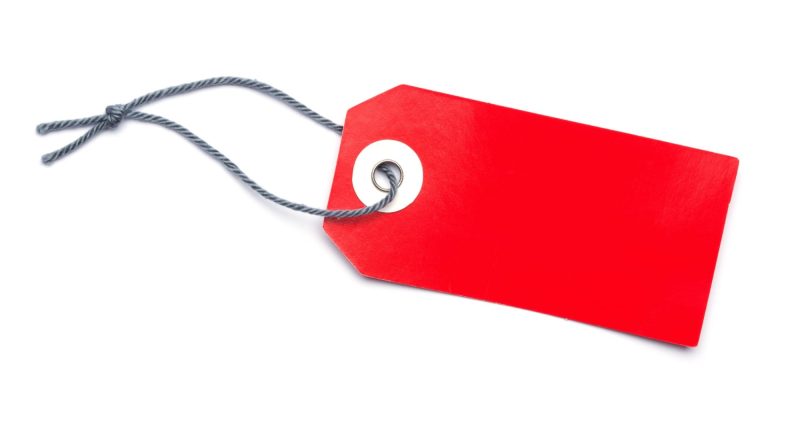
Opinions expressed by Entrepreneur contributors are their own.
You’re reading Entrepreneur Middle East, an international franchise of Entrepreneur Media.
In the competitive world of business, price wars, despite their initial appeal, are rightly seen as a race to the bottom.
When competitors are engaged in a downward spiral to offer the lowest prices, it can be demoralizing for businesses, leading to diminished profit margins, eroded brand value, as well as strained customer relationships.
When marketers find themselves caught in a saturated market, and are tricked into believing that the lowest price is the only differentiating feature, they can become blinded to the unique selling points (USPs) of their own products or services. As a result, marketers will find themselves grappling with a unique set of challenges.
Here, we delve into the pitfalls of price wars, as well as the challenges they pose. We also explore some effective strategies for marketers to navigate their options -and succeed- in a price-war environment.
UNDERSTANDING PRICE WARS AND THEIR PERILS
Price wars come about either as a result of a participant’s willingness to buy market share in exchange for their current margins, or from a belief that prices in a particular market are too high. Businesses can, by understanding their competitors, gain the upper hand when it comes to deciding how to react to a price war.
As per an article in the Harvard Business Review, applying intelligent analysis to a price war can lead to a more accurate diagnosis, and it is often more than half the battle. Marketers need to understand how to respond to competitors’ pricing actions based on reliable knowledge of those competitors, and their available resources, as well as their own resources. “Not only is it necessary to understand why a price war is occurring or may occur,” notes the Harvard Business Review, “it also is critical to recognize where to look for the resources to do battle.”
That kind of knowledge is essential, because, on the face of it, price wars present marketers with an impossible dilemma that ultimately puts them at the mercy of others’ actions. Why? Because the initial temptation to gain a temporary competitive edge through lower prices can quickly spiral into an uncontrollable and debilitating cycle. Competing solely on price erodes profit margins, making it challenging for businesses to sustain operations, protect their brand, or invest in innovation.
Related: Negotiating A Global Acquisition For Your MENA Business? Here’s What You Need To Know
PRICE WARS: WHAT TO DO (AND WHAT NOT TO DO)
So, what can marketers do to escape the price-war abyss? Here’s a game plan for what to do in a price war, and what not to do:
1/ Adopt a value-based pricing strategy Most customers understand the difference between value and price, especially when they factor in the total cost of ownership, and how it relates to a product or service they consume over time. Rather than engaging in a race to the lowest price, it therefore helps to adopt a value-based pricing strategy- marketers should identify and communicate the unique value propositions that set their product or service apart from competitors, such as superior quality, utility, innovative features, or exceptional customer service. Identifying customers’ varying sensitivity to price and quality can allow businesses to respond creatively to a competitor’s price cut without slashing their own prices. In short, do not allow margin erosion without adding value to the product or service, and understand the value. Simply cutting prices without addressing the reasons behind the competition can result in a downward spiral of diminishing returns. If you’ve entered a price war without gaining the necessary intelligence on your competitors to understand how to win, your business may not survive.
2/ Alert customers to risk Companies can also respond to price wars by alerting customers to the risk of poor quality in competitor’s “bargain-basement” products. This is particularly effective where customers put a high value on reliability, accuracy and dependability. Let’s take the example of a European manufacturer of medical diagnostic devices when faced with a price war from a competitor. In the knowledge that customers in this segment are risk-averse when it comes to fluctuations in product quality, the company responded by pointing out the potential negative consequences of risking an inaccurate or incomplete medical diagnosis. By emphasizing improved reliability over competitors’ products, as well as better and more reliable information gained from the product, the company succeeded in retaining the (majority) quality-sensitive segment of its market.
3/ Bundle and upsell Create bundled offerings, or upsell complementary products and services, to increase the average transaction value. By providing customers with added value, you can justify maintaining higher prices while offering a more comprehensive solution. A case in point is Amazon’s Prime membership- in the global e-commerce space, Amazon bundles additional services such as 24-hour shipping, exclusive deals, and streaming services to its Amazon Prime membership. This allows Amazon to maintain higher prices, whilst offering added value to its customers.
Related: Getting One’s Ducks In A Row: Tracking A Lux Journey, From Startup To Acquisition
4/ Embrace selective pricing If you’re faced with a price war, consider cutting prices only for the segments of the population under threat from the war, thereby limiting your price cuts only to areas where the business is vulnerable. Time-of-use, quantity discounts, and loyalty programs can help insulate a business from a price war. As the Harvard Business Review notes, “in this way, managers can localize a price war to a limited theater of operation- and cut down the opportunities for the war to spill into other markets.” In addition, companies that operate across a wide geographical base may be able to ignore localized price wars, avoid selective pricing in markets where they appear vulnerable, and decide to shift supply and sales efforts into other markets without damaging their brand.
Here’s an example from the manufacturing sector: UAE-based RAK Ceramics declined to enter a price war in the GCC region in 2016 by maintaining a focus on product innovation and quality, and by focusing on its established and trusted global brand across its many different markets. By focusing sales efforts across its other 150 markets, and by launching new, trendsetting designs, RAK Ceramics retained its premium image amidst aggressive price competition from new market entrants by investing in growth in a variety of distribution channels for its different ranges.
5/ Enhance the customer experience Invest in enhancing and underlining the overall customer experience. From a seamless online shopping interface to exceptional after-sales support, a positive customer experience can be a powerful differentiator in a price-driven market. To give just one example, the ride-hailing industry in the UAE witnessed intense price competition in 2016, particularly between startup success story, Careem, and the global conqueror of legacy ride-hailing business models, Uber. Although Uber bought Careem for US$3.1 billion in 2019, it had first engaged in a price war with the ride-hailing startup, having promised in 2016 to earmark $250 million to expand into the region. Careem successfully differentiated itself by focusing on superior customer experience, with its co-founder saying, at the time of Uber’s expansion attempt, “We embrace competition, because it prompts us to constantly improve our services, and focus on customers’ satisfaction.”
The key takeaway here is: do not neglect brand differentiation. Focusing solely on price neglects the intangible aspects that make a brand unique. In this case, despite Uber’s very deep pockets, it eventually recognized that Careem’s brand differentiation, partly through customer and employee satisfaction, and partly through superior deployment of technology, was not going to yield to Uber’s aggressive attacks. Therefore, marketers should emphasize and communicate the value proposition, concentrating on aspects such as customer service, quality, innovation, and utility.
6/ Fight the price war There will be occasions when price competition will be the smart move, but businesses need to understand very clearly what they’re hoping to achieve. If a company’s intelligence on a competitor’s resources is reliable, it may be necessary to demonstrate an intention to fight and win, with pre-emptive or retaliatory cuts used to show you mean business. In addition, if that intelligence shows a cost advantage, and that your resources are greater than your competitors’, engaging in a price war might be the only way to wrestle a growing market of price-sensitive customers from your competitor, especially if you can take advantage of greater economies of scale compared to those available to competitors.
WHETHER YOU CHOOSE TO FIGHT OR NOT, CHOOSE INTELLIGENTLY
In the fog of price wars, marketers must navigate strategically to avoid engaging in a race to the bottom, or at the very least, understand the reasons for engaging in a war. Understanding the perils of price wars, and steering clear of common pitfalls, are vital for long-term sustainability. By adopting value-based pricing, emphasizing brand differentiation, and enhancing the overall customer experience, businesses can not only survive, but thrive in the face of relentless price competition. As marketers navigate the challenges of price wars, the key lies in balancing competitiveness with sustainable profitability, understanding the value of your product or service, and recognizing where margins can be sacrificed in the pursuit of market share. That way, you will ensure that your businesses not only weather a price war, but can emerge stronger and more resilient in the aftermath of one.
Related: Content Platforms As A Launchpad For Female Entrepreneurs In The MENA
This article is from Entrepreneur.com








